
The best 4K camera 2021
Apr 27th, 2021
The best 4K camera 2021: 10 top models for video recording
Are you looking for the best 4K camera on the market for yourself? Don't worry, we'll help you. Buying a new 4K camera can be tricky, as the technology is now found on almost every device. Previously, 4K was blessed only with flagship models. Therefore, the presence of 4K alone may not say anything yet.
Whether you’re starting a video shoot or upgrading your former stock, in 4K, it’s not just the resolution that matters. Shooting also involves screen refresh, codecs, and many other things that make 4K shooting either excellent or poor.
The majority of today’s cameras shoot 4K video at a frame rate of at least 30 frames, but on the best models, the video is shot at a silky soft frame rate of 60 frames - or even higher.
The highest quality ones also have a log profile, which makes it easier to find color balance in post-production, among other things. The available accessories are also important, as it is a good idea to have the widest possible range of different microphones, headphones and other accessories on the side of the picture.
Because 4K cameras are different from each other, we want to help our readers choose the most suitable one for themselves. We’ve reviewed numerous different models from several different manufacturers, so we know how they compare to each other and which ones are the best of the best.
Below, we have put together the best mirrorless options for every need and budget. Panasonic has had the best 4K models for a long time, but with the arrival of new models on the market, alternatives are now commendable. Thus, excellent individuals can be found from Sony, Nikon, Blackmagic and Fujifilm.
Choose the best camera for you
The supply of cameras has shrunk in recent years - fewer new models are coming, and few new products will remain on store shelves longer before a new version is launched. One would think that the choice would thus be even easier, but the declining number of models has led to a situation where only a few camera types dominate the whole market. The features are similar in many, even if the manufacturer is different. Image quality, which is the most important criterion for most buyers when choosing a new camera, is better than good in almost all cameras sold today. This is especially true for SLRs, both mirrorless and mirrorless, which, regardless of the manufacturer, offer such good image quality that a highly trained eye is required to notice qualitative differences. Thus, other features of the cameras play a more important role. How well does autofocus work? Can the camera maintain a high shutter speed for two seconds or two minutes? Is the device resistant to water and dust? Is a bright telephoto lens available for the camera? Does the video work well? And so on. The easiest way is to read the tests and find out if there is a camera that is best suited for your own use. A photographer who crawls among the undergrowth to capture immortal moments of nature needs quite different qualities than parents who want to photograph their offspring. The best camera depends very much on your own needs. Many needs can be met with a cell phone camera, but they still have their limitations that make many end up buying a decent camera. The right camera still offers better image quality and more options.
Before we get to the best cameras of the year, let’s go through a few more basic things about choosing the right device.
The best 4K cameras in a nutshell:
1. Sony A7S III
2. Blackmagic Pocket Cinema Camera 4K
3. Panasonic Lumix S1H
4. Panasonic Lumix GH5
5. Panasonic Lumix S5
6. Fujifilm X-T4
7. Canon EOS R5
8. Sony Alpha A6400
9. Panasonic Lumix G9
10. Olympus OM-D E-M1 Mark III
1. Sony A7S III
The Sony A7S III is practically the best hybrid camera you can buy at the moment. It limits video shooting to 4K, and like many other models, doesn’t go for 6K / 8K shooting, as it specifically aims to be the best possible 4K camera. In addition to the mute result, it has the ability to shoot at 120 frames, take 16-bit raw content over HDMI, a mute high-resolution viewfinder and a fully tiltable display with enhanced touch capabilities. Videographers also appreciate connections for extra headphones and microphones, support for XLR-K3M mounting rails for Sony products, and four audio inputs. It’s a pricey camera though, but if you want the best track on the market, you can’t get much better than this.
SPECIFICATIONS
- • Camera Type: Mirrorless
- • Cell: Full cell
- • Resolution: 12.1 MP Lens
- • mount: Sony E
- • Viewfinder: 9.44 MP EVF
- • Display: 1.44 m folding display
- • Continuous shooting: 10 fps
- • Video: 4K @ 120 images / s
- • User level: Intermediate / professional
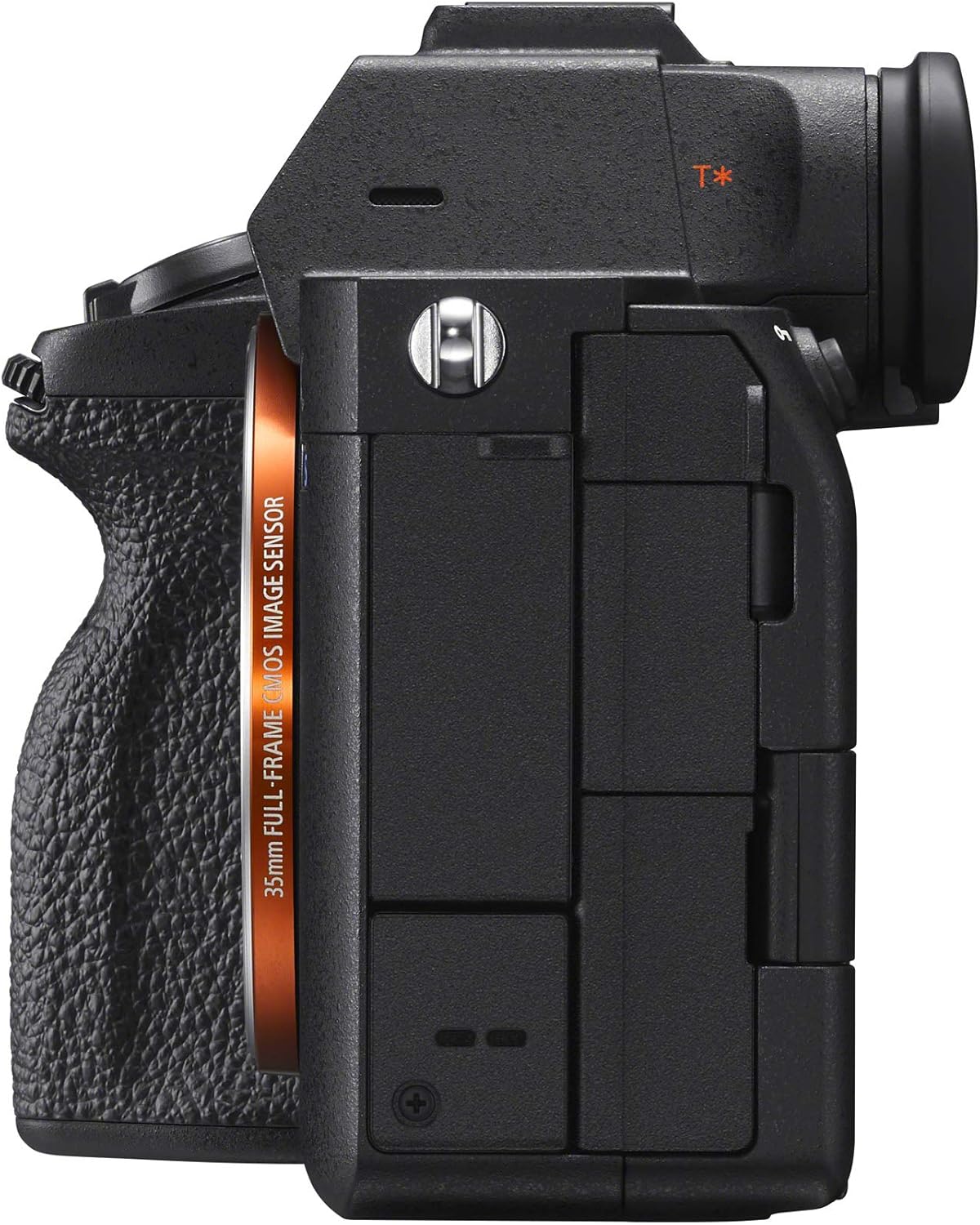

2. Blackmagic Pocket Cinema Camera 4K
Blackmagic’s Pocket Cinema Camera 4K is our new favorite for shooting 4K video. It is designed entirely with filmmakers in mind and is therefore not suitable for those who appreciate the possibility of still photography. Based on the Micro Four Thirds sensor and lens mount, the body is equipped with a large five-inch touch screen. From a video point of view, the Pocket Cinema Camera 4K is the best MFT camera. The camera offers first-class connectivity and two memory card slots. Thanks to the two memory cards, the Pocket Cinema Camera 4K outperforms many significantly more expensive cameras, such as the Canon EOS R. With the proper sound recording features and the € 319 DaVinci Resolve Studio video licensing software included in the sales package, with its licenses, promising real value for money. The most notable feature of the camera is above all the sharp 4K video image, the quality of which reaches the level of even more expensive models. In skilled hands, this camera also performs better in terms of noise than many full-cell models, thanks to the camera's two native ISOs.
SPECIFICATIONS
- • Camera Type: Mirrorless
- • Kenno: Micro Four Thirds
- • Resolution: Unknown Lens
- • Mount : Micro Four Thirds
- • Display: 5.0-inch touch screen
- • Video: 4K at 60 frames frame rate
- • User level: Professional
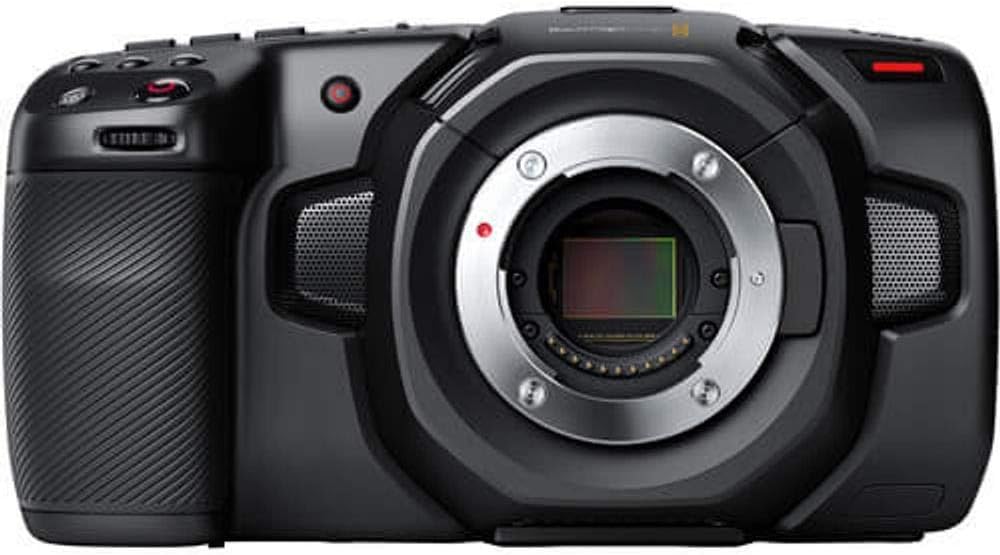
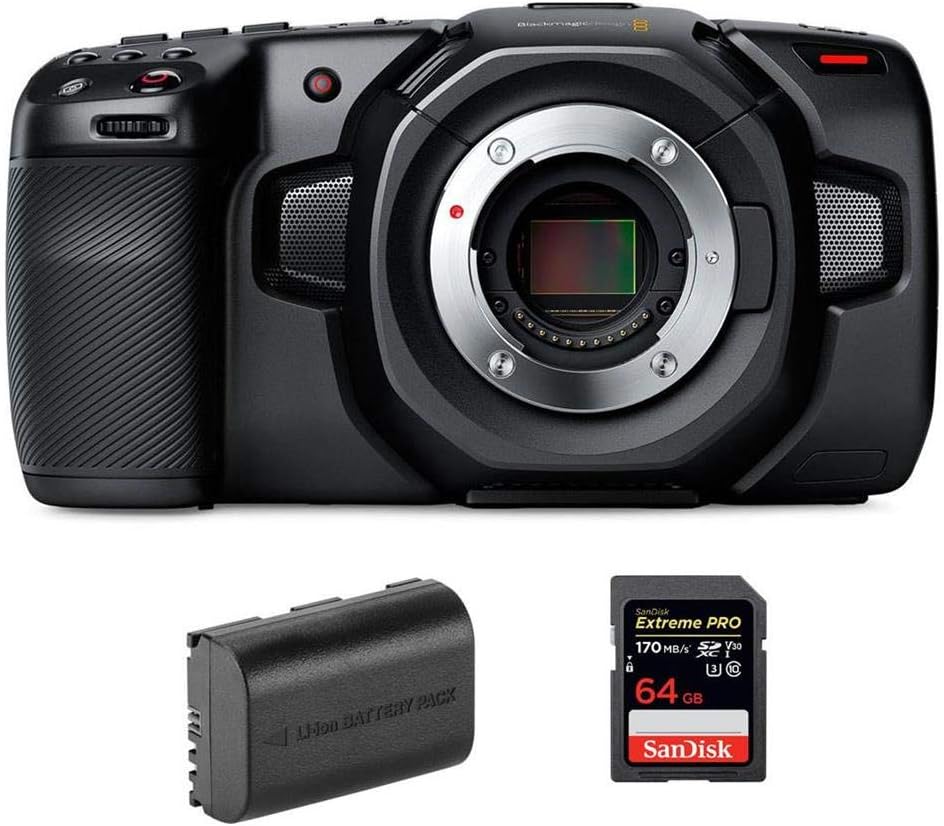
3. Panasonic Lumix S1H
The Panasonic Lumix S1H is the smallest and cheapest camera on this list, which Netflix has approved as a shooting tool for shooting its own exclusive productions. This already says a lot about its quality. The image quality of the S1H is almost perfect in virtually any environment. Thanks to Dual Native ISO, it has excellent noise reduction, and a comprehensive range of resolutions and screen updates is enough for even the most demanding use. From 6K / 24p video to 4K / 60p video, it is served in a 10-bit color scheme, providing flexibility in the operating room. The camera also supports anamorphic lenses, Cinelike Gamma, V-Log / V-Gamut and HDR in HLG. Color profiles can be adjusted directly from the camera. Despite the range, the S1H is truly intuitive in its usability thanks to a redesigned interface. However, it is a large and heavy camera, but as a result it is also almost silent and includes a working cooling system. Thus, it can shoot until the battery or memory card runs out.
SPECIFICATIONS
- • Type: Mirrorless
- • Cell: Full Cell CMOS
- • Resolution: 24.2 MP
- • Lens mount : L mount
- • Display: 3.2 - inch foldable touch screen, 2,330k dots
- • Continuous shooting: 9 fps
- • Video: 6K
- • User level: Professional


4. Panasonic Lumix GH5
The Lumix GH5 was our favorite camera for video recording before its successor, the Lumix GH5S. The older Lumix GH5 is significantly cheaper than the newer model and, due to its more versatile photography features, is better suited for those who want to shoot not only video but also traditional still frames. The camera's movie features are also convincing. The camera records 4K video (4,096 x 2,160) at 60 frames (150 Mbps bit rate) and Full HD videos at 180 frames. In addition, the Lumix GH5S’s 10-bit 4: 2: 2 color space offers more comprehensive color information and richer color scales. The camera also connects to a separate external audio recorder, such as an HDMI recorder in the Apple ProRes recording format. We are already looking forward to testing Panasonic's full-frame S1 (and S1R ) with strong video technology and very low light shooting . However, before we have time to complete all our tests, we will stick to this list in GH5.
SPECIFICATIONS
- • Camera type: Mirrorless camera
- • Kenno: Micro Four Thirds
- • Resolution: 20.3 MP
- • Lens Mount : Micro Four Thirds
- • Viewfinder: Electronic
- • Display: 3.2-inch rotating and swiveling touch screen, 1,620,000 dots
- • Continuous shooting speed: 12 fps Video: 4K
- • User level: Professional

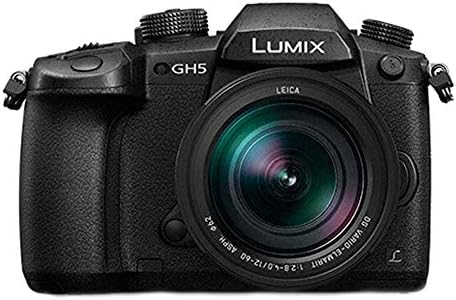
5. Panasonic Lumix S5
The Panasonic Lumix S5 is a smaller and lighter model of the Lumix GH5, but it still fits a full cell. It is therefore comfortable, compact in the hand and easy to use, thanks to the fully flexible touch screen. The 24.2 megapixel sensor supports either grooved 4K at 60 frames frame rate or pure 4K at 30 frames frame rate. It can also capture 10-bit 4K internally, but this is limited to 30-minute snippets only. The picture quality is excellent for Panasonic's hours. There is a lot of detail in the image and the image stabilizer keeps the image smooth. Contrast-based autofocus isn't the best, but it can still track subjects well enough. When you add V-Login, timelapse videos, two native ISO settings, and anamorphic 4K to the equation, the S5 becomes a truly compelling 4K camera. Although we recommend buying a second battery if the shooting sessions last all day, the only real compromise is the presence of Micro HDMI instead of normal HDMI. But on the other hand, the camera also has Wi-Fi and Bluetooth support.
SPECIFICATIONS
- • Camera Type: Mirrorless
- • Cell: Full cell
- • Resolution: 24.2 MP
- • Lens Mount : L-Mount
- • Display: 3.0-inch foldable touch screen, 1.84 million dots
- • Continuous shooting: 7 fps Video: 4K
- • User level: Beginner / intermediate level

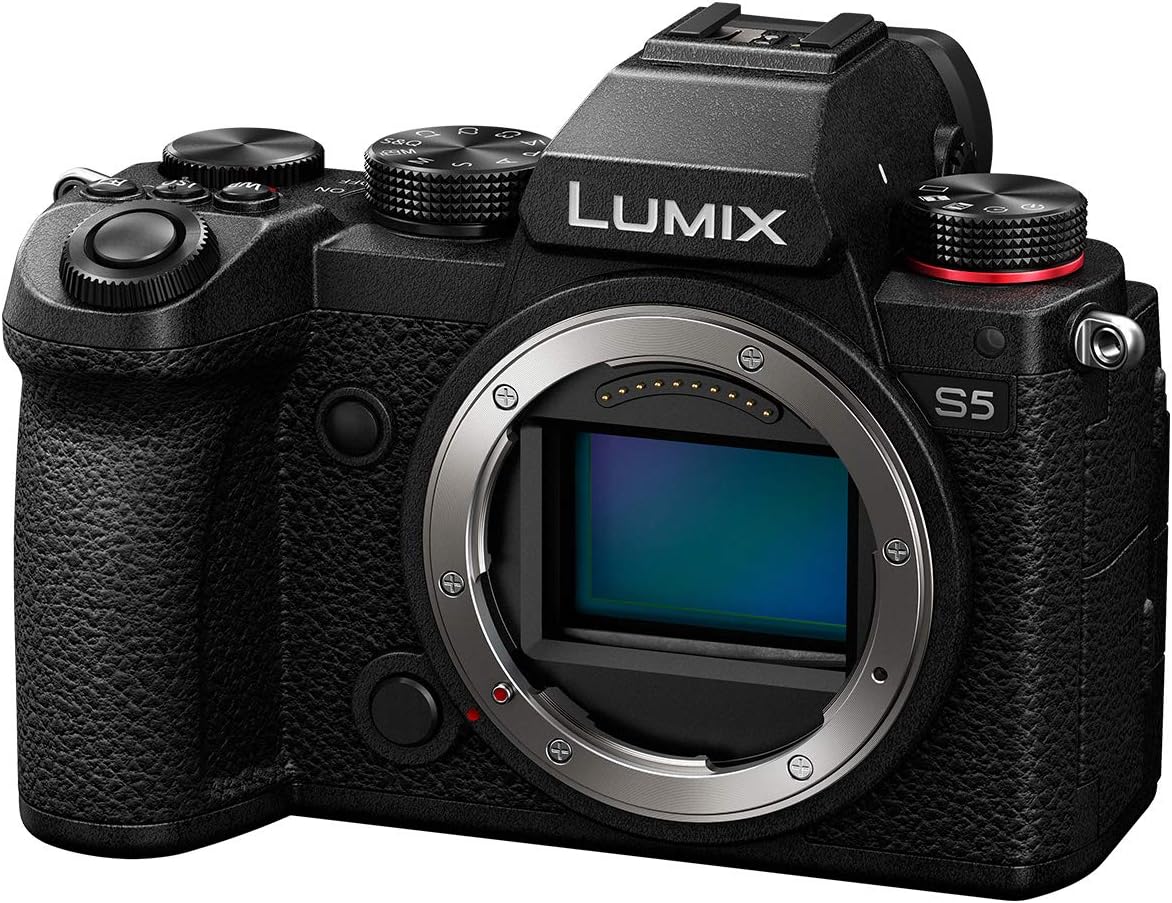
6. Fujifilm X-T4
Fujifilm’s X-T3 significantly remedied the shortcomings of its predecessor, and now the X-T4 is making a similar leap when it arrives as the company’s new best 4K camera. The biggest improvement is the built-in Image Stabilizer (IBIS), which makes this model bigger and heavier, but still significantly lighter than entry-level digital SLRs. However, the stabilizer does not completely replace a separate gimbal, but it still brings stability to handheld shooting. But combined with a 26.1-megapixel backlit APS-C sensor, it’s an excellent camera for both light and video shooting. The X-T4 is especially dazzling for video shooting, with cinema-quality features ranging from 60 fps Cinema 4K to 10-bit internal recording. In addition, it supports 400 Mbps bit rate, F-Log and HLG profiles. The slow-motion picture, on the other hand, works with Full HD video at a frame rate of 240 frames, and IBIS guarantees stability in front of 6.5 EV when used with Fujifilm's stabilized lenses. Overall, the Fujifilm X-T4 is the best APS-C-cell mirrorless camera right now.
SPECIFICATIONS
- • Camera Type: Mirrorless
- • Cell: APS-C
- • Resolution: 26.1 MP
- • Lens mount: Fuji X
- • Display: 3 - inch folding display, 1,620k dots For: EVF, 3.69 million points
- • Continuous shooting: 15 fps or 30 fps Video: 4K
- • User level: Intermediate / professional


7. Canon EOS R5
Viewed on paper, the Canon EOS R5 is arguably the best hybrid camera right now. Its usability is excellent and performance is unbeatable: the 45-megapixel full-frame supports a fast Digic X processor, alongside Canon’s fastest autofocus. The video features are equally compelling. 4K video is recorded at a silky soft frame rate of 120 frames, in addition to which it is possible to record the video raw. The resolution reaches a maximum of 8K / 30p. The print is knife-sharp, and the built-in image stabilizer and RF lenses also ensure smooth hand shots. Log files also help keep color tones under control. Unfortunately, the EOS R5 suffers from limited shooting times to curb camera overheating. 4K / 60p video can be recorded for a maximum of 35 minutes at a time, which is unhelpful for a professional photographer. Shorter clips recorded in the same period of half an hour's description hardly arrive in time to be a problem. So if that limitation isn’t a disadvantage and you can afford to buy a more expensive CFExpress memory card, the R5 is an excellent 4K hybrid option.
SPECIFICATIONS
- • Cell: Full cell
- • Resolution: 45 MP
- • Display: 3.15 - inch folding touch screen, 2,100k dots Focus: 5,940-point Dual Pixel AF
- • Continuous shooting: 20 fps
- • Video: 8K @ 30p
- • User level: Medium


8. Sony Alpha A6400
Although the Pentax K-70 is already a few years old, it is still a good option for those who also qualify for cameras other than the two largest SLR manufacturers. You can get the most out of your camera if you already have old Pentax lenses in your basement. The K-70 has a practical swivel display, and the viewfinder is especially useful because of the live view autofocus system. However, the best thing about this camera is its durability. Few beginner-oriented cameras are weatherproof and equally robust in body. Landscape and nature photographers in particular appreciate that the camera is not destroyed in worse weather conditions. A slight disappointment instead is the kit lens that comes with the camera. Although the lens has a slightly longer focal length than many of the other kit lenses in our guide, the catalog it describes is not always the sharpest and most detailed of all.
SPECIFICATIONS
- • Camera Type: Mirrorless
- • Cell: APS-C
- • Resolution: 24.2 MP
- • Lens: Sony E
- • Display: 3-inch swivel touch screen, 921,000 dots
- • Viewfinder: Electronic Continuous shooting
- • speed: 11 fps
- • Video: 4K
- • User level: Beginner / intermediate


9. Panasonic Lumix G9
While the Panasonic Lumix G9 is unmatched by the Lumix GH5 in terms of video, it is still a versatile frame for both light and video shooting, especially thanks to the latest software update released in November 2019. The update brought the camera nice features valued by professionals, such as 10-bit 4: 2: 2 video support. Even before the software update, the camera had a few juicy video features, such as Cinema 4K video mode, which records videos at 60 frames per second. In addition, the G9 includes two UHS-II SD memory card slots and state-of-the-art built-in image stabilization, which allows the camera to shoot at shutter speeds faster than 6.5 stops, even with the hand. The Lumix G9 is weatherproof, easy to handle and offers numerous still features such as 20 frames per second equivalent burst speed with autofocus. The camera can record up to 60 images per second when autofocus is off. All in all, it’s no exaggeration to call the Lumix G9 a great and versatile mirrorless camera.
SPECIFICATIONS
- • Camera Type: Mirrorless
- • Cell: Micro Four Thirds Live MOS
- • Resolution: 20.4 MP
- • Autofocus: 225-point autofocus
- • Display: 3-inch swivel touch screen, 1,040,000 dots
- • Viewfinder: Electronic Continuous shooting
- • speed: 20 fps Video: 4K, 60 fps
- • User level: Enthusiast


10. Olympus OM-D E-M1 Mark III
The OM-D E-M1 Mark III continues where its predecessor left off. The end result is a capable camera for both light and video shooting. The Mark III's video shooting skills convince both casual photographers and professionals: it supports Cine 4K video at 24 frames (237 Mbps) and Full HD at up to 120 frames, plus an OM-Log 400 color profile. Powerful image stabilization, on the other hand, keeps the image stable and sharp, and eye and face-based autofocus is convincing. For those who need accessories, the camera also has headphone and microphone jacks. Actually, the only thing we missed on the camera is the Live ND mode in video mode, which simulates a real ND filter. But on top of that, it’s hard to find any decent flaws in the camera.
SPECIFICATIONS
- • Camera Type: Mirrorless
- • Kenno: Micro Four Thirds
- • Resolution: 20.4 MP
- • Lens Mount : Micro Four Thirds
- • Display: 3.0 - inch flexible touch screen, 1,037K dots
- • Continuous shooting: 18 fps
- • Video: 4K
- • User level: Medium


Check these things before buying a new camera
When you buy a new camera, you need to figure out many features and functions. We made a list of the most important things to consider. Feel free to first take a look at camera tests and product reviews, for example in the Digital Image Tool Guide , you will see what experienced professionals have said about the models that interest you.People’s camera needs are different, but there are a few basic things to at least pay attention to when considering stores.
1. Image sensor size
The size of the image sensor is the single technical factor that most affects image quality.The image sensor captures light, as the film did on analog cameras in decades ago.The cells of cheaper compact cameras and smartphones are smaller than the claw of a little dragonfly, while the cells of full-size cameras are the size of a large stamp, so it can collect much more light and image information.
2. Number of focus points
Some cameras have thousands of focus points, but whether they are 50 or 5,000 is not as essential as one might think in light of the numbers. The important thing is that they are evenly distributed over the image area so that the camera can focus even if the subject is at the edge or at an angle. Focus points usually fill a larger portion of the image area when shooting through the screen than when shooting through the optical viewfindr. Focusing is faster when shooting through the viewfinder.
3. Burst speed
Continuous shooting speed refers to how many frames per second the camera can take.For landscape and building photographers and portraits, this is not particularly important, but for sports and bird photographers, for example, it is a good thing if the burst speed is at least ten frames per second.
4. Battery life
The better the battery life, the better - then the risk of losing a good shooting situation in the event of a power outage is reduced. In practice, however, one charge gets more dry than promised in the operating instructions.The operating instructions usually describe a shooting method in which the camera is turned off and on often, and e.g. flash. Video recording, of course, consumes battery power briskly.If the indicated number of shots on a single charge is less than 400, we recommend purchasing a spare battery if there is a lot to shoot in one shooting trip.
5. ISO sensitivity
At high ISO values, you can shoot in low light without shaking the images and showing too much movement. As the ISO sensitivity is increased, the image signal from the cell is amplified, and at the same time the image noise is increased.Some cameras have the option of using six- or seven-digit ISO values, although this may not tell you much about how good or better bad results are obtained at the highest ISO sensitivities.However, a high maximum value can be an indication that medium values such as ISO 25 600 or 51 200 still produce quite valid images.We do not usually exceed ISO 12,800 to ensure that the image quality is always good enough.
6. Display
Today, the size of a liquid crystal display (LCD) is usually 3 to 3.2 inches. Screen accuracy is at least as important. It should preferably have at least a million dots so that the image it reproduces does not pixelate.It’s also at least a good thing if the screen turns in different directions. This makes it much easier to shoot, for example, overhead or on the ground.
7. Ergonomics
You should try the camera at a store, if at all possible. Only then do you feel how it feels in your hands - even when you have a lens attached to it.At the same time, check how conveniently the main controls and buttons are positioned.
8. Resolution
Camera resolution was still a hot topic of discussion a few years ago, but today most cameras have a resolution of at least 12 megapixels, images are always repeated in detail unless printed on paper and enlarged to poster size.The 4K screen is equivalent to 8.3 megapixels, and the 17 megapixel image can already be magnified into a high-quality A3 poster without any worries. The high resolution also allows for severe cropping and partial enlargements.
9. Camera system
When purchasing a SLR camera, you should consider the composition of the included accessories such as a lens, flash unit, etc. - in relation to what you already have.Some systems include, for example, special lenses.It may also be that your old lenses are accessing your new camera through an adapter.
10. Weather protection
You should also consider whether you want a weatherproof model with joints that are all sealed so that water and dust cannot get in.Most cameras can withstand a small cloud of dust and morning fog, but if you want to shoot in heavy rain or at the seaside, you should get a fully weatherproof camera.Digital image number 10/2019 contains a large camera guide that brings together all the SLR cameras on the market.
11. The smart light tent guarantees perfect light and sharp images
With the digital photo tent, you get a nice little home studio that is also easy to take with you anywhere.The new light tent makes it easier than ever to photograph macro objects such as flowers and insects or food and goods that are to be sold over the internet.The uniform background of the light tent gives your images a professional look, and its LED lamps illuminate the images perfectly without shadows or reflections.
All Products